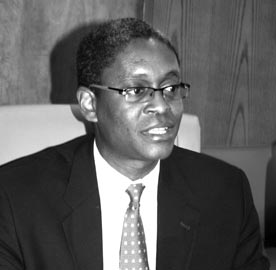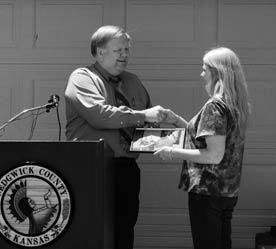Shelterforce is most concerned about distressed communities, and many small markets were just starting to come back when all this hit. Do you see a different role for HUD in those communities than in the larger housing market?
I think you’ve seen the federal government in general embrace that approach, with things like the CRA, CDFIs, New Markets Tax Credits.
We’ve just gone through an environment where the broad market was at significant risk. And so, the first step is really to get that to some level of stability so that we can start to think about what other segments in the market are we having problems with that continue to require support.
We have a strong mission at HUD to support communities that have been distressed, but we also want that recovery to happen in such a way that it doesn’t expose that community to more risk. We’ve seen a zealous pursuit of homeownership get communities broadly in trouble. We’ve seen — and this is a long time ago, of course — even government programs facilitating the trouble in these communities.
So while we want to make sure that we’re doing all we can to make sure that opportunities exist in all neighborhoods for all Americans, we want to do that in a very careful way, with an eye toward not creating excess risk and exposure.
Ownership is one of my soapbox issues, actually. Ownership is not just about your mortgage, right? You’ve got to have money for maintenance. We don’t really tell anybody that until after they buy the house. I mean, 9 times out of 10, people buy the house and then realize, “Oh, I’m gonna need a roof. Where is that money going to come from? I hope I have it.”
Working with groups like NeighborWorks and the like, I think there is a lot that we can do to help. And I don’t think you’re going to see this administration retreat from that commitment. This is actually quite important for us.
What role do you see for nonprofit housing developers, or CDCs, in the wake of the foreclosure crisis? And is there a concern about capacity issues?
We talk a lot about public-private partnerships. We’re trying to reach out to philanthropy and foundations to learn from their experience in communities. We clearly understand the value of the nonprofit and its important role because of its different orientation in terms of mission.
Are there capacity issues? Of course there are. When I was in Los Angeles, we had a number of nonprofits that were doing good work but didn’t have the bandwidth to get it to scale. We have to think about models and approaches to allow that to happen more easily.
There are a lot of academics who would say that in some areas there are too many nonprofits all doing similar things, and because of that, you don’t get to economies of scale. I have not really studied that to know whether that’s true, but that’s got to be something that we examine closely and understand better.
A lot of the activities that happen in this arena are pretty specialized. To the extent that we can build a class of talented young people who can become the next generation of service providers, that’s very important. I’m doing a lot of outreach to universities, master’s programs, trying to encourage them to be engaged in this arena, to encourage their students to think about these issues and devote some of their time here.
The neediest places are often the ones that have the least capacity. We really need to home in on those places and find ways to get resources there.
What do you see as the greatest challenges facing low-income communities over the next decade? What role will HUD and PD&R play?
I think the biggest challenge is to make sure that all low-income communities are truly communities of opportunity; that they’re communities that have the amenity mix, the job opportunities, the human capital, the good schools and the like, so that people can realize their greatest potential.
And there are lots of barriers to that. We have concentrated poverty. We have disinvestment in a lot of places. We have conventional wisdom that argues against investment in places. There are crime issues, and significant segments of the population are incarcerated or have records. That is a tremendous impediment. There’s a lot of work for us to do to.
As I said, the secretary is trying to change the world. When he’s done, he’d like to be able to say we don’t have any more homelessness, and we don’t have concentrated poverty anymore, and we have unemployment rates that aren’t double in these low-income distressed neighborhoods what they are in the rest of the metro area, and we don’t have housing blight that makes places visually unattractive to live in, but rather we have opportunity. Everywhere we go, we see vibrant places that are achieving and realizing their potential. That’s where we want to get to. And it’s going to take a lot of work and it’s going to be hard. But, if you don’t have lofty ideals and goals, you’re certainly not going to get there.
So, the big challenge is the complexity.
It’s very hard. My staff has remarked on a number of occasions that they haven’t worked this hard in a long time. We’re trying to do a lot of things, and move the dial in a lot of dimensions, and it’s very exciting. It’s exhausting, but it makes it easy to get up every day because you know you’re going in the right direction.
Thank you.





Comments